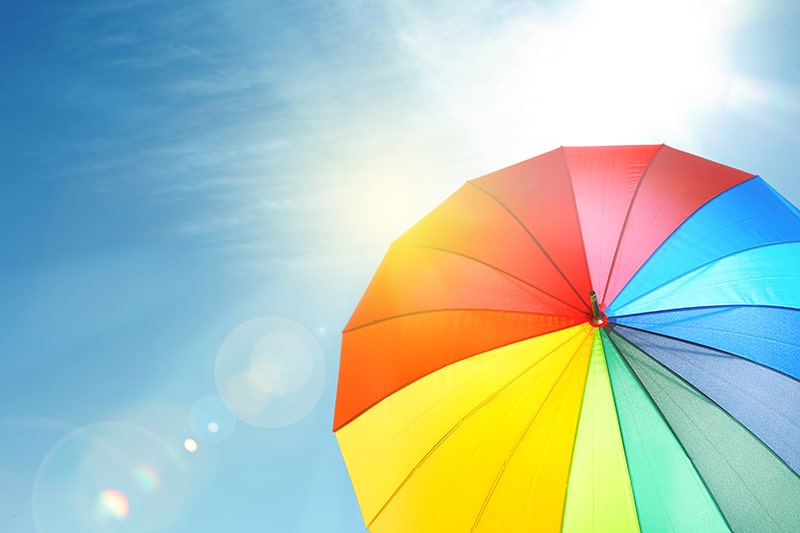Safety Tips & Other Bits
Ultraviolet or UV radiation comes mainly in the form of UVA and UVB rays. Although the latter are normally more powerful, both of them can damage skin and are one of the leading causes of skin cancer.
Now that the summer is upon us is a good time to review some of the bare basics behind UV protection, for your own good. Here are some important pieces of information you need to heed.
UV Index
There is a UV Index that you can check online every single day of the year, wherever you live. This UV Index was developed by the US National Weather Service and the Environmental Protection Agency, famously known as the EPA. It is a scale from 1 to 11+, the higher numbers being more detrimental, and is now a staple of most weather forecasts, domestic and foreign. Check it out here: www.epa.gov/sunsafety/uv-index-1
Factors Affecting UV Exposure
- Time of Day: Strongest between 10 am and 4 pm.
- Season: Stronger in spring and summer.
- Latitude: This is the distance from the equator. Exposure wanes the further you are from the equator.
- Altitude: More UV exposure at a higher elevation.
- Cloud Cover: UV rays get through to the ground even on cloudy days.
- Surface Reflectivity: UV rays bounce off surfaces (i.e., water, sand, snow, pavement, windows), which increases UV exposure.
- Length of Exposure: Self-explanatory.
- Bright Sunlight Areas: Year-round, bright sunlight areas mean a higher risk of skin cancer due to sustained exposure.
- Outdoor Time Factor: Time spent outdoors without protective clothing and sunscreen increases exposure and risk.
- Pattern: Frequent sunburns at childhood or in your younger years will normally come back to bite you later on. Protect children.
Know Your Skin Type
Sensitivity to UV radiation is variable and depends on your skin type, meaning the amount of pigment and the ability to tan. The skin type is laid down on the Fitzpatrick Skin-Typing Scale. There are 6 skin types, types I and II (white skin, fair complexion, red or blond hair, blue and green eyes, even freckles) being at higher risk of skin cancer. Beware though: cancers do happen in darker-skinned people and they are often detected very late, at a more dangerous stage.
Safety Tips
- Wear protective clothing.
- Wear broad-brimmed sunhats.
- Wear sunglasses with quality 100% UV protection, preferably wrap-around.
- Use broad-spectrum sunscreen liberally, at least 15 minutes before exposure. Sun Protection Factor or SPF should always be 30 or higher.
- No sunscreen protects you fully, so reapply often (every 2 hours).
- Reapply sunscreen after swimming or if you are perspiring profusely.
- Learn how to apply sunscreen correctly (amount, cover, body areas, reapplication). Always read the label.
- Remember: wearing sunscreen does not mean you can or should increase exposure time. It just means you are adequately protected when doing so. Exposure adds up.
- Use lip balm, also with SPF of 30 or higher.
- If you are going to be in the sun, heed the catchphrase ‘Slip, Slop, Slap, and Wrap’: Slip on a shirt. Slop on sunscreen. Slap on a hat. Wrap on sunglasses.
- Stay in the shade, especially between 10 am and 4 pm. Exposure adds up: beware of the ‘innocent’ minutes packed throughout the entire year. For example, wintertime can be a time of extreme exposure. Such is the case for winter-specific outdoor sports, such as skiing. Snow reflection doubles UV radiation.
- Keep babies, toddlers, and children out of the sun, significantly between 10 am and 4 pm. Have children play under trees and other naturally shady areas. If you can’t, slather them with ample sunscreen and protect your skin and eyes.
- Cloudy skies DO NOT protect from UV radiation. Rays get through fog, haze, and cloud cover.
- Check the EPA UV Index wherever you are.
- Tanning beds and sun/heat lamps are a big no-no. It may be a good idea to even use protection on your hands if under a UV lamp, such as in a nail salon.
Sources:
https://www.cancer.org/healthy/be-safe-in-sun/uv-protection.html#
https://www2.gov.bc.ca/gov/content/health/keeping-bc-healthy-safe/radiation/ultraviolet-uv-radiation/protecting-yourself-from-ultraviolet-uv-radiatio


